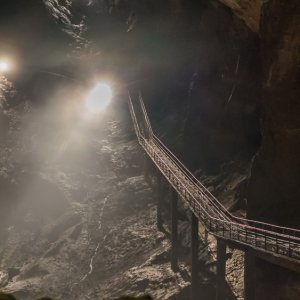The Role of Mining Clusters in Mexico

STORY INLINE POST
Mining clusters in Mexico have emerged as a notable economic phenomenon, garnering significant attention in recent years. These clusters are agglomerations of companies, suppliers, and services related to the mining industry located in a specific geographic region. These entities foster a more integrated supply chain, competitiveness, and greater innovation in the mining sector.
Mining has been a significant economic activity in Mexico since pre-Hispanic times. During that time, native peoples extracted precious metals, such as gold and silver, for the production of ceremonial, decorative, and monetary articles. Later, during the colonial period, mining activity became one of the country's main sources of wealth, and the production of precious metals remained as the main mining activity for much of Mexico's history.
During the 19th century, the mining industry in Mexico experienced significant growth thanks to the opening of new mines and the introduction of more advanced machinery and technology. At this time, the mining industry focused on silver production, and Mexico became the world's leading producer of this metal. However, the Mexican mining economy began to decline in the 1920s when silver production began to decrease and metal prices significantly decreased. However, in the 1970s, the opening of the Mexican economy to international trade and the promotion of foreign investment resulted in a resurgence of the mining industry.
Currently, the mining industry is one of Mexico's main economic activities, being one of the world's main producers of minerals, which has led to the formation of these clusters of companies whose common goal, despite competitiveness, is the improvement, development, and promotion of the mining industry.
In this regard, the importance of the existence of mining clusters lies in their ability to allow greater efficiency in the mining industry's supply chain, as well as greater competitiveness and innovation within it. By bringing together mining companies, suppliers, and services providers located in a shared geographic region, these clusters enable the exchange of resources, expertise, and cutting-edge technology, driving improvements in production processes and reducing costs.
Moreover, mining clusters play a pivotal role in promoting job creation and driving economic development in the regions where they are established. In Mexico, the mining industry is one of the most significant sources of employment, and mining clusters serve as catalysts for strengthening this sector and generating new job opportunities for the population.
A key function of mining clusters is to serve as a platform for facilitating the transfer of knowledge and technology between mining companies and their suppliers. Within these clusters, companies can exchange information on best practices in the industry, share insights on the latest technologies, and collaborate on developing the most efficient methods for mineral extraction.
Furthermore, mining clusters also enable the formation of collaborative networks between mining companies and their suppliers. These networks create opportunities for companies to work together to achieve shared goals, leading to mutually beneficial relationships that drive greater efficiency and competitiveness.
Another key benefit of mining clusters is their ability to foster innovation in the industry. By bringing together mining companies and their suppliers in close proximity, these clusters create an environment that encourages collaboration, knowledge-sharing, and the exchange of ideas.
Mining clusters have also played a key role in shaping mining regulation and legislation in Mexico. The presence of these clusters has led to a more collaborative and constructive relationship between mining companies, suppliers, and government regulators, resulting in legislation that better reflects the needs and challenges of the industry. Through ongoing dialogue and collaboration with regulators, mining agents have been able to identify areas for improvement in regulation and propose solutions that benefit the entire industry. This has led to a more streamlined and efficient regulatory framework that promotes the growth and development of the industry while ensuring environmental protection and social responsibility.
In addition to these benefits, mining clusters can also have a positive impact on the environment by enabling the sharing of practices and technologies that reduce the environmental impact of mining activities. By promoting sustainable mining practices, mining clusters can minimize negative impacts on local ecosystems and communities, while supporting the long-term viability and success of the industry and the sustainable development of local economies.
In conclusion, the development of mining clusters in Mexico has been a significant economic phenomenon in recent years, with the potential to drive efficiency, innovation, and competitiveness in the mining industry. By fostering collaboration, knowledge-sharing, and technology transfer among mining companies and their suppliers, these clusters have helped to improve the efficiency and effectiveness of supply chains, generate employment and economic development in the regions where they are located, and promote the development of innovative technologies and products. In addition, mining clusters have played a crucial role in shaping and improving mining regulations in Mexico, leading to greater legal certainty for national and international mining companies operating in the country. Overall, the development of mining clusters in Mexico is a positive step towards a more efficient, innovative, and sustainable mining industry.








 By Pablo Méndez | Managing Partner -
Tue, 04/04/2023 - 13:00
By Pablo Méndez | Managing Partner -
Tue, 04/04/2023 - 13:00
















